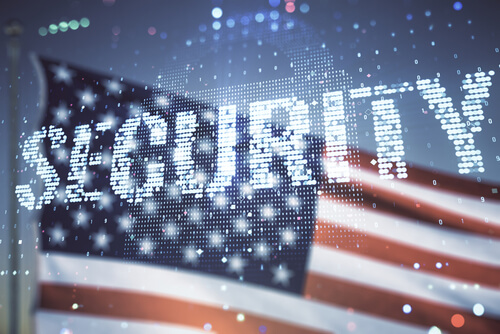The White House has declared artificial intelligence "the most consequential technology of our time" in its newly unveiled America's AI Action Plan. Released Wednesday, July 23rd, the sweeping policy outlines a national strategy to accelerate AI innovation, expand infrastructure, and "ensure that America leads the world in its responsible development and use."
"To remain the world's preeminent AI power, the United States must act with urgency and unity," the plan reads. "This includes harnessing AI to strengthen national security, advance American values, and empower our workforce."
For the cybersecurity industry, the implications are immediate and profound. The plan emphasizes deregulation, massive infrastructure expansion, and federal workforce investment. But it also introduces new risks, challenges governance structures, and raises questions about privacy, security standards, and the threat landscape enabled by AI.
Infrastructure boom = new attack surface
A central theme of the AI Action Plan is the rapid development of data centers, cloud platforms, and compute infrastructure. While this fuels innovation, it also presents lucrative new targets for adversaries.
"Data centers and cloud infrastructure are already high-value targets," said Marcus Fowler, CEO of Darktrace Federal. "Securing the infrastructure behind AI isn't a barrier to innovation—it's the only way to operationalize it with confidence."
Venky Raju, Field CTO at ColorTokens, warned of "a looming threat" where attackers use AI tools like fuzzers and exploit generators to identify and weaponize vulnerabilities faster than defenders can patch them. "AI-based tools will detect and exploit vulnerabilities faster than patching or detection can keep up," Raju said, underscoring the need for Zero Trust and automation.
Security governance must catch up
With AI disrupting how software is built and deployed, governance frameworks are being challenged to evolve.
"Governance will need to adjust to cover a vision for security in an era where software writes software," said Jamie Boote, Associate Principal Security Consultant at Black Duck. He emphasized that AI's speed is already outpacing traditional security testing guidance, and that organizations must proactively define what "secure AI" means within their development pipelines.
A new cyber workforce challenge
The plan includes initiatives for upskilling the federal workforce in AI literacy and integration, but the cybersecurity workforce is already stretched thin.
"Personnel seems to be a key inhibitor, but this pain will only grow," said Satyam Sinha, CEO of Acuvity. He called for "GenAI-native security products" that create a multiplier effect for talent, and suggested the creation of targeted certification programs to close the gap in AI fluency among security professionals.
Piyush Pandey, CEO of Pathlock, echoed the importance of upskilling, saying he sees AI as a force multiplier—not a job replacer—within cybersecurity: "Talented cybersecurity pros with a growth mindset will become increasingly valuable as they guide AI's deployment internally."
Balancing innovation with privacy and control
While the plan seeks to preempt state-level AI laws and streamline regulations, experts warn that rushing to deregulate could compromise user privacy and constitutional rights.
[RELATED: Texas Passes Most Comprehensive AI Governance Bill]
"If privacy foundations aren't well-established, AI tools could be collecting and storing personal information without users' knowledge," said Kris Bondi, CEO of Mimoto. "This quickly becomes both a privacy and security issue, with AI tech turning into a breach target."
Toward a unified cyber strategy
The plan does nod to cybersecurity, including proposals for secure-by-design technologies, a new AI-ISAC, and expanded collaboration through NIST frameworks and export controls. But some leaders want stronger, centralized direction.
"We need a unified cybersecurity framework… to prevent a fragmented approach with constantly evolving state-level mandates," said Chad Cragle, CISO at Deepwatch. He also pushed for "real consequences" for cyberattacks on critical infrastructure, calling cyber warfare "a daily reality."
Dave Gerry, CEO of Bugcrowd, sees promise in the federal-private partnerships outlined in the plan. "The AI-ISAC, secure-by-design focus, and investment in workforce development signal that the government understands the role cybersecurity must play," Gerry said.
The AI Action Plan could reshape cybersecurity—from regulatory expectations to staffing demands to the very tools defenders use. Whether it enables long-term resilience or opens up new vulnerabilities will depend mainly on how implementation unfolds.
"The only way to truly solve the AI security challenge is through AI-native approaches—and a workforce that can wield them," said Sinha.
As AI's pace continues to outstrip policy, cybersecurity professionals find themselves in a defining moment—one that requires not just adaptation, but leadership.
Follow SecureWorld News for more stories related to cybersecurity.





